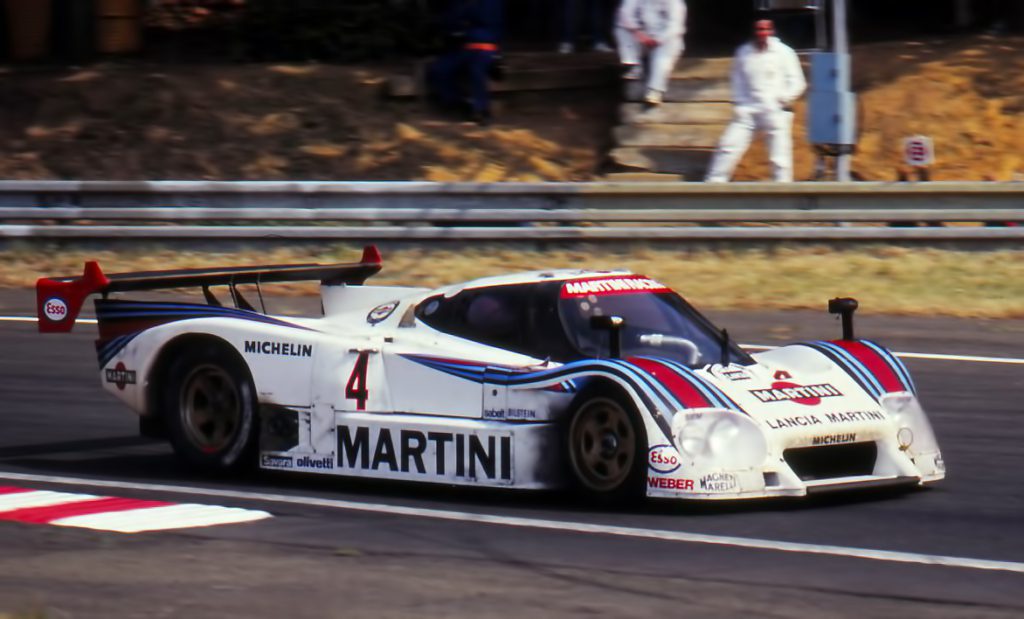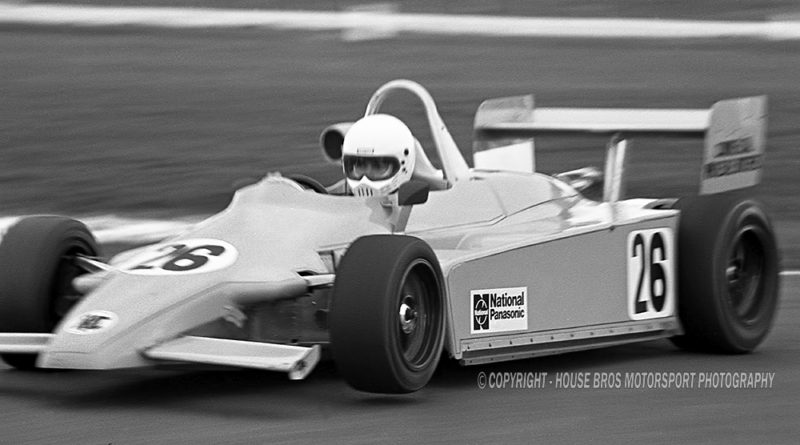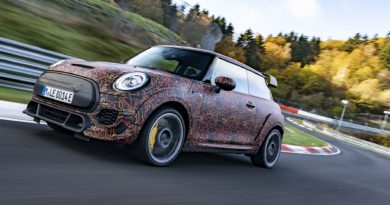Weekend rewind: Lucio Cesario – Part 2
Photos: Ian House; Darren House – House Bros Motorsport Photography
First published in 2017
In part 2 of Darren House’s chat with Lucio Cesario, we discuss Cesario’s time with the Lancia World Endurance Championship sports car team and why his career came to a premature and sudden halt. You can read a transcript here or listen to the podcast at: https://bit.ly/3qnmBtH
You had support, at one time, from Prahran Market.
Prahran Market was, believe it or not, my very first sponsor, and my only sponsor. That came about early in the Ralt days. It didn’t come easy. I’ve always said actions speak louder than words and I was able to do something on the circuit to attract the next drive or whatever it may have been.
1985 was a good year for you.
At the end of 1984 we had the WEC endurance championship at Sandown, with Rothmans Porsches and what have you, and there was an Italian team there running an Alba [AR2] Giannini [Carma FF 2.0L Turbo I4], who were looking for a driver to co-drive with their permanent driver [Guido Daccò, an Italian race car and motorcycle racer], and my name was brought up. So, I ended up driving for this Alba team. After the event, the team manager said, more or less, what are you doing here, I’ll introduce you to the manager of the Lancia team in Europe, Cesare Fiorio, and I thought, ‘Wow, yes, that’d be great’.
At the beginning of ’85, I jet over to Italy and build up enough courage to ring Cesare Fiorio from the Lancia team, who in turn, after a meeting with him, I begged and pleaded with him to give me a test in this Lancia [LC2 – Ferrari 308C 3.0 L Turbo V8] and he kept explaining to me… they already had their team set, they already had their two full-time drivers for each car. Anyhow, one thing led to the other and he was kind enough to give me a test.
So, the following morning, they had a car test there with [Alessandro] Nannini and, so I went to the Monza circuit the following morning and had a run in the Lancia. I did a total of about 11 laps, and I was within one second of their best time of the day. That in turn led to a three-year contract with Lancia. Now, I want to point out, bearing in mind they already had their two full-time drivers for the team, they put me in as a reserve, quite rightly so, and I was very lucky for them to even consider putting me in there because they had no plan of putting in a test driver, but I think because he was pretty impressed with my time at Monza, he put me in as a reserve driver and sort of slotted me in for events.
Unfortunately, at the end of ’85, FIAT, Lancia, and Ferrari and so forth had to pull the plug on one of the programs, it was just too costly, it was getting out of hand, and at the end of ’85 my Lancia deal ended.
So, I was pretty dejected, came back to Australia at the end of ’85 and had an offer to drive in ’86 with Colin Bond’s team.
Once again, the mistake was not having a manager. I think when one door closes, a manager tries to open another door for you. I was doing everything off my own bat and when Lancia pulled the plug, I was sort of pretty lost about where to go from there and headed back down under. That pretty much was the end for me. I decided I’d given it a good crack, it was F1 or nothing, once again it was that ‘you’re either in or out’, and I, more or less, chose to call it a day.
I remember going down the Mulsanne Straight and I’m thinking to myself, ‘This straight never ends’.
So, when you were in Europe, or even before that in Australia, your intent was always to get into Formula 1?
Absolutely. That was my only goal. After winning the Australian title we were looking at doing British Formula 3 but wow, back in those days it was an astronomical amount of money, and it just wasn’t possible. That would have been the natural progression, that’s what I should have done, British Formula 3, and as you know, doing well in British F3 is a passport to possibly F1. That would have been the natural transition.
Some people might have thought you bought the Lancia drive and even the drive at Sandown in the WEC round.
One hundred percent, no. Absolutely not at all. Darren, once again, as I’ve been saying all along, actions speak louder than words. I was given the opportunity to test the Lancia and hence that led to a three-year deal, so no pay-drive. No pay-drive. The last time we bought a race car was in ’83, the drives after that were 100 per cent not-pay drives.
Were you paid to race in Europe?
Yes, I was paid with Lancia. A measly wage but, bearing in mind that you didn’t do it for the money, most definitely not, it was a privilege to have a drive in such a massive team. From there, who knows where it could have gone.
What was it like going from running your own car in Australia to being part of a European works team?
In the sports car scene, it would have been one of the top teams, parallel with the Rothmans Porsches. What was it like? It was an amazing journey. It was being thrust in with drivers of the calibre of [Riccardo] Patrese, Nannini, rocking up, the car is pretty much all set to go, they were great days, traveling on the company Learjet, it was an amazing, amazing experience. It was priceless.
You ran at Le Mans, which must have been exciting.
Ran at Le Mans, with Nannini and Bob Wollek, amazing experience. I didn’t know what to expect about the circuit. I’d read so much about Le Mans, and I thought it would have been a daunting circuit [but it was] very straight forward. That was back in the days with chicanes, but it was an absolute privilege to be there with the cream [of the crop], it was just a great experience.
How tough was it driving at night, with the headlights trying to ‘keep up’ with the very high speed?
Funny you should mention that. When we arrived at the circuit it was in the evening and my boss asked me to go out and test these new lights. Now, I hadn’t seen the circuit, it was dark, these new headlights were blaring at the front of the car, and I remember going down the Mulsanne Straight and I’m thinking to myself, ‘This straight never ends’. To cut a long story short, after completing half a dozen or so laps, I went back in to the pits and Fiorio said, “Well done. Those times you were doing were good race times,” and I’m thinking, ‘Wow’, and I still don’t remember the apexes of the corners because it was dark and I didn’t know what was on the other side of the apex, and he goes, “Do you know how fast you were going down the straight”, I go, “No”, and he says, “385”, and I thought, ‘Wow, that’s amazing’. It was a great, great experience. Fantastic.
One of the big things at Le Mans is the speed differential between the fastest and slowest cars, with amazing closing speeds.
That’s pretty daunting. Hence, I think… back then there was no chicane, but I think all in all, from memory, [the slower cars] used to hold their lines and you sort of get your way through. It wasn’t too much of an issue.
It was obviously disappointing that the deal ended, prompting your decision to return to Australia. Tell me about that.
Well, ’86, – how old would I have been? 26, 27, or 28 I might have been – I’m a very realistic person. I’m thinking to myself, ‘God, I’ve still got no money, how many more years can you give it, maybe I should put my head down and start earning some money’. So, Cesario Motors more or less started, opening up a workshop, having big commitments with overheads and high interest rates back in those days. So, I more or less had to put the motor racing thing aside and concentrate on the business. My father was already involved but we were doing it on a bigger scale. Admittedly back in ’86 I had an offer to do IMSA in America, for a drive, and I knocked it back because the business that we started here was my idea, and there was just no way known I was going to let the family down and walk away, jump on a plane and show them I was going overseas again so I buckled down and said, “No, I’m going to stick with you guys”, it was my idea, and that’s what I did.
In hindsight, who knows? Right decision, wrong decision, I don’t know but at that point in time it seemed like the right decision. Then I did ’86, with Colin Bond’s team and Bathurst. Then ’87, I co-drove with Colin Bond at Bathurst and [had] that famous shunt into the wall. I went down in history as the first guy to bring out the pace [safety] car at Bathurst. It’s not something I’m proud of. And once again I thought I’d let the world down. I thought I’d let the team down, they had so much faith in me, and from that point, at the end of ’87, I hung up the helmet. I felt… I’d let them down.
It was an accident, but I took it to heart and more or less then and there decided to hang up the helmet.
Talk me through that incident.
You know, I’m going to be honest, and I always have been honest with whatever incident I’ve had on the circuit. I had a bit of a brain-fade at that particular time, that particular corner. I missed the brake marker, and I paid the consequence. I clipped the kerb, there was ‘kitty litter’ and the car virtually flew right over the top of it, and into the wall. That was one of those moments where I made a mistake, and I was man enough to admit that I made a mistake on that particular day, it is as simple as that. I wasn’t going to blame the machinery. It was my mistake. As I said, I took it pretty badly, I felt bad about letting [the team] down, not for myself. That more or less put an end [to my racing career].
That’s my big regret. I never had that taste for go karting. From there, maybe, who knows. Hindsight is a lovely word, isn’t it?
You race in historics today, what else have you been doing since you walked away?
Working. I’m still in the car industry, I’m buying a lot of cars … I’m taking it pretty easy, I suppose. I bought myself a beautiful Ralt (RT 21 Formula Holden) back in 2013, and I’m running it at the odd historic event, having an absolute wow of a time. Loving it. And I honestly think that – my lap times mightn’t show it – but I think I’m driving just like I used to, personally (laughs), I feel the same vigour, the same energy. Nothing’s changed – in my mind.
Still trying to get to F1?
(Laughs). As I said, I’m a realistic person.
What’s the history on that Ralt?
That won the Gold Star in 1990 [Simon Kane].
You’ve also got some interesting road cars that were very dear to your father.
Yes. You know, outside of the race car, on the road I’m probably the opposite – I drive a very sedate little Lancia or a little old FIAT, as opposed to when I get to the circuit. I’m having a great time. I am sort of reliving my father, my blessed Dad who passed away three years ago. Reliving a lot of memories through these cars; I’m right into what my father used to own.
Given how brief your career was, are you surprised there is so much talk about it, even today, particularly on social media?
Absolutely, absolutely. I think, ‘God, [I] must have made a lot of noise (laughs). [I] must have rustled some feathers’, because even to this day people still [talk about it]. Look, I’m amazed – I’m proud that… I love listening to the odd stories people still remember about me, that, as I said, it was only a short career – from the start to the end – five years. I wished I had have realised from an early age… as I said I took it for granted, Dad had all the race cars, as I said it never crossed my mind to jump in and have a run in any of them. I wish I had my father had said at an early age, ‘Look, we’ll buy you a go kart and let’s see what happens from there’. That’s my big regret. I never had that taste for go karting. From there, maybe, who knows. Hindsight is a lovely word, isn’t it?
You should get one now.
Look, I tell you, I think about it. I probably will.
Is there a favourite story you have about yourself, perhaps where people got you very right, or very wrong?
Look, I think people have got me very wrong full stop from the very start of my career. I just hope some of the things we’ve spoken about, sort of brought them out into the light a bit, people might not keep asking those questions of how these drives came about, through money, wealthy family, this sort of stuff. I just believe people have just read me the wrong way. As I said, I probably put it down to shyness.
We spoke before about you being the Villeneuve of Australia, but it was actually reported that way in the Italian Press.
After my test with Lancia, that day, I had journos approach me and I was getting changed in this beaten old 127, these journos approached me an started talking to me about my career and who I was, and I wasn’t even totally aware of who they were and I said to them, “Where are you from,” and they go, “We’re from La Gazzetta dello Sport” and I said, “Where do you get that”, and they said, “It’s Italian, you buy it at the newsagent”. So, the following morning, as soon as I stepped foot outside of the motel, I went straight to the newsagent and bought the magazine, which is a little sports paper, and I couldn’t believe my eyes. It had a picture of me and a caption that said, in Italian, that Lancia has tested at Monza with the Villeneuve of Australia. I was astounded at the noise I’d made. I mean you don’t associate… I don’t want to sound like a bighead… you don’t associate anyone with Villeneuve in Italy. Villeneuve is God. And when I read that caption, I thought, my God, I must be a bee’s dick away from Formula 1. But yes, I was astounded. Once again, going back in my years of motor racing, making noise of which I wasn’t aware. It was there, you can see it.
And when I read that caption, I thought, ‘My God, I must be a bee’s dick away from Formula 1’.
Where do you think they got that comparison?
They might have heard a similar comparison, or they might have done some research in Australia, I’m not sure, but I think I remember Auto Action bringing out a magazine once that had the Villeneuve of Australia or something. Certainly, nothing was said from my end.
Did they consider you Italian or Australian?
I think they referred to me as Italian, my parents are both Italian. I think they wanted to make me one of them, even though I’m Australian. Cesario, the Italian name, Italian heritage, probably few of them asked where I was from, it never sort of came up. They probably took it for granted I was Italian.
Lucio, it’s been fantastic having a chat to you, certainly your racing holds great memories for me and many others. It was very exciting watching you on the track and there are lots of younger people who have heard about your career but didn’t witness it, so thank you for sharing your memories with our audience.
Thank you very much, Darren. Personally, I’d like to thank you, you’re probably the only journalist that’s ever really listened to my side of the story and I hope it has given people an insight into my racing career.











